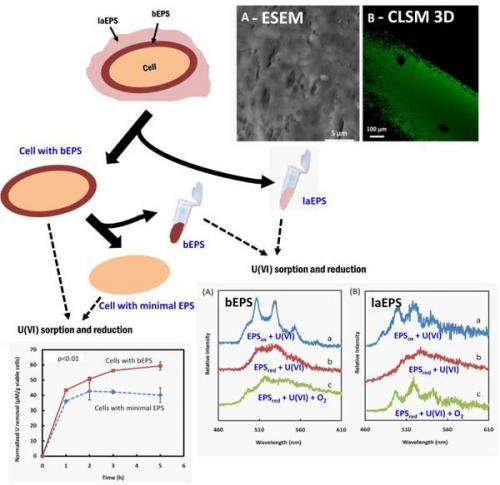Microbes that immobilize

Using a model organism isolated from a uranium seep of the Columbia River, scientists recently quantified how extracellular polymeric substances (EPS) in subsurface environments can be used to immobilize heavy metal and radionuclide contaminants such as uranium [U(VI)].
Subsurface uranium is a significant contaminant at U.S. Department of Energy sites. Remediation solutions include immobilizing contaminants to prevent them from reaching groundwater.
In geologic systems, EPS can help bind microbes to mineral surfaces, influence cellular metabolism, and influence the fate and transport of contaminants.
The team prepared the isolate Shewanella sp. HRCR-1 biofilms containing EPS using an in-house designed novel biofilm reactor, and quantitatively analyzed the contribution of EPS to U(VI) immobilization.
Using EMSL’s nuclear magnetic resonance to analyze chemical residues in EPS samples and cryogenic fluorescence spectroscopy to obtain sensitive U(VI) measurements, they tested the reactivity of loosely associated EPS and bound EPS with U(VI).
The scientists found that, when reduced, the isolated cell-free EPS fractions could reduce U(VI) and the bound EPS contributed significantly to its immobilization, primarily through redox-active proteins. For loosely associated EPS, sorption of U(VI) was attributed predominantly to reaction with polysaccharides.
More information: Cao B, B Ahmed, DW Kennedy, Z Wang, L Shi, MJ Marshall, JK Fredrickson, NG Isern, PD Majors, and H Beyenal. 2011. "Contribution of Extracellular Polymeric Substances from Shewanella sp. HRCR-1 Biofilms to U(VI) Immobilization." Environmental Science & Technology, DOI: 10.1021/es200095j
Provided by Environmental Molecular Sciences Laboratory
















